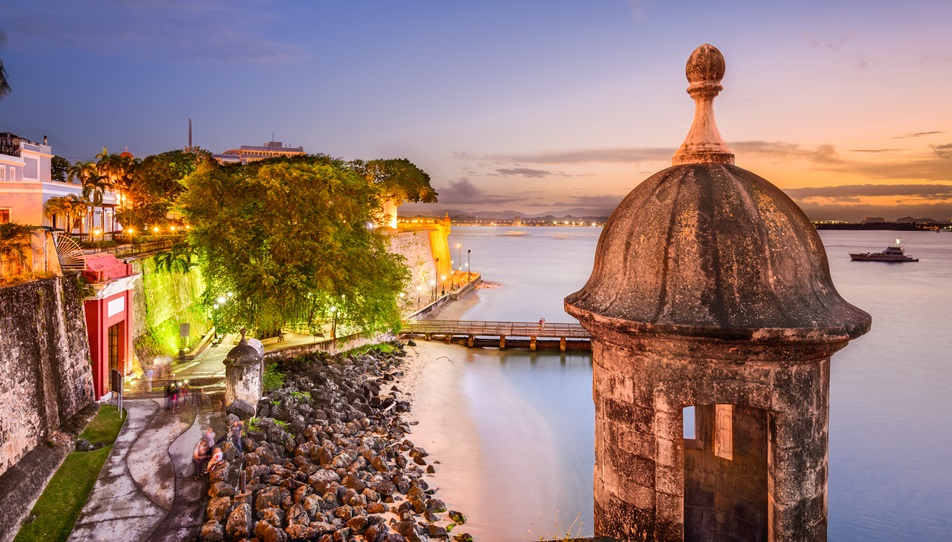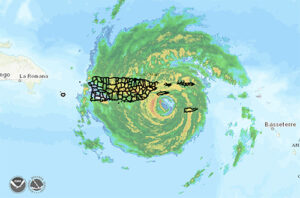The U.S. Federal Emergency Management Agency (FEMA) was officially created on April 1, 1979 via an executive order by President Jimmy Carter. In the almost-half-century since then, the agency has never funded natural resource restoration as a component of disaster recovery. Until now.
On June 12, 2023, FEMA allocated $3 million under the Hazard Mitigation Grant Program (HMGP) for the first phase of restoration for the coral reef barrier located in the San Juan Bay of Puerto Rico.
It was the first “ecosystem services” allocation under HGMP to restore a natural resource to protect survivors and boost resilience after a disaster.
Federal Disaster Recovery Coordinator José G. Baquero said, “Coral reefs are natural barriers that prevent the loss of life and property by reducing the risk of flooding and erosion of infrastructure due to high energy wave and current impact. This historic obligation will undoubtedly open the door for similar initiatives that address the effects of climate change and its impact on communities.”
The project seeks to reduce flooding and protect some 800 structures surrounding the communities of Escambrón, Condado, Ocean Park and Puntas Las Marías.
The initiative consists of two phases, for a total of approximately $38.6 million.
The Governor of Puerto Rico, Pedro R. Pierluisi, said that with this allocation, “We continue to support our public policy for the protection and preservation of our natural resources that seeks to mitigate the impact of climate change on our Island. With these federal funds, the Department of Natural and Environmental Resources (DNER) will create a system of hybrid coral reefs, including artificial coral and native living coral. This is an integral part of the initiatives we are working on to further the goals of our Ecological Emergency Declaration of 2021 to address the stony coral tissue loss disease and our Executive Order establishing a State of Emergency on Coastal Erosion. I reiterate my gratitude to FEMA and the Biden Administration for all their support to improve resiliency in Puerto Rico.”
Coral reefs act as naturally submerged breakwaters. They are very effective, since they reduce the energy of the waves that reach the coasts. These structures defend communities from coastal flooding, whether during storms or from rising sea levels.
After back-to-back hurricanes, a couple of earthquakes, and the outbreak of stony coral tissue loss disease, Puerto Rico’s coral reefs are in need of some TLC. And, with rebuilt coral reefs, Puerto Rico’s coastal communities will be protected against future natural disasters.
Local stressors around the San Juan Bay have affected the optimal levels of protection of the current system. As a result, this 5-kilometer area is subject to continuous coastal flooding and erosion, to the impact of strong surges, as well as to other effects of future storms. This disrupts public and private infrastructure and endangers lives along San Juan’s metropolitan coastline.
“Without healthy reefs, this coast would suffer from coastal flooding, loss of infrastructure and loss of beach for recreation and for nesting endangered sea turtles, such as the leatherback, which return to these shores from March to July, where they were born, to leave their nests,” said Hilda Benítez Álvarez and Aida Balzac, the president and vice-president of the Tortuguero de San Juan 7 Quillas Group.
Both grew up in the Ocean Park and Punta Las Marías areas, and have witnessed how much the offshore zone has shortened and the significant increase in storm surges that cause coastal flooding.
The funds allocated to the DNER seek to increase the three-dimensional structure of the coral reef, reducing wave energy. The action plan will install a mix of cement structures similar to artificial coral and native living coral at 0.8 kilometers off the coast of San Juan.
Similarly, in another section, a new artificial reef with three segments will be built. There, the necessary measures will be taken to limit the effects on the seabed and its ecosystem. This will reduce the number of drownings attributed to rough surf and dangerous currents in the Condado Beach area.
For her part, DNER Secretary Anaís Rodríguez Vega mentioned that another important element of the reefs is their function as a habitat and nursery for organisms of commercial value, such as fish, lobsters and other organisms on which fishermen depend.
“This project recognizes the importance of coral reefs as infrastructure that protects our coastline. It allows us to invest even more and carry out a restoration effort on scales that we have not been able to do before. It is an unprecedented project that will protect our community and support community awareness efforts about the services coral reefs provide,” she concluded.
To date, FEMA has awarded over $3.1 billion for 150 HGMP projects that will address mitigation measures for a more resilient Puerto Rico.
Photo of San Juan Bay via Adobe Stock.


